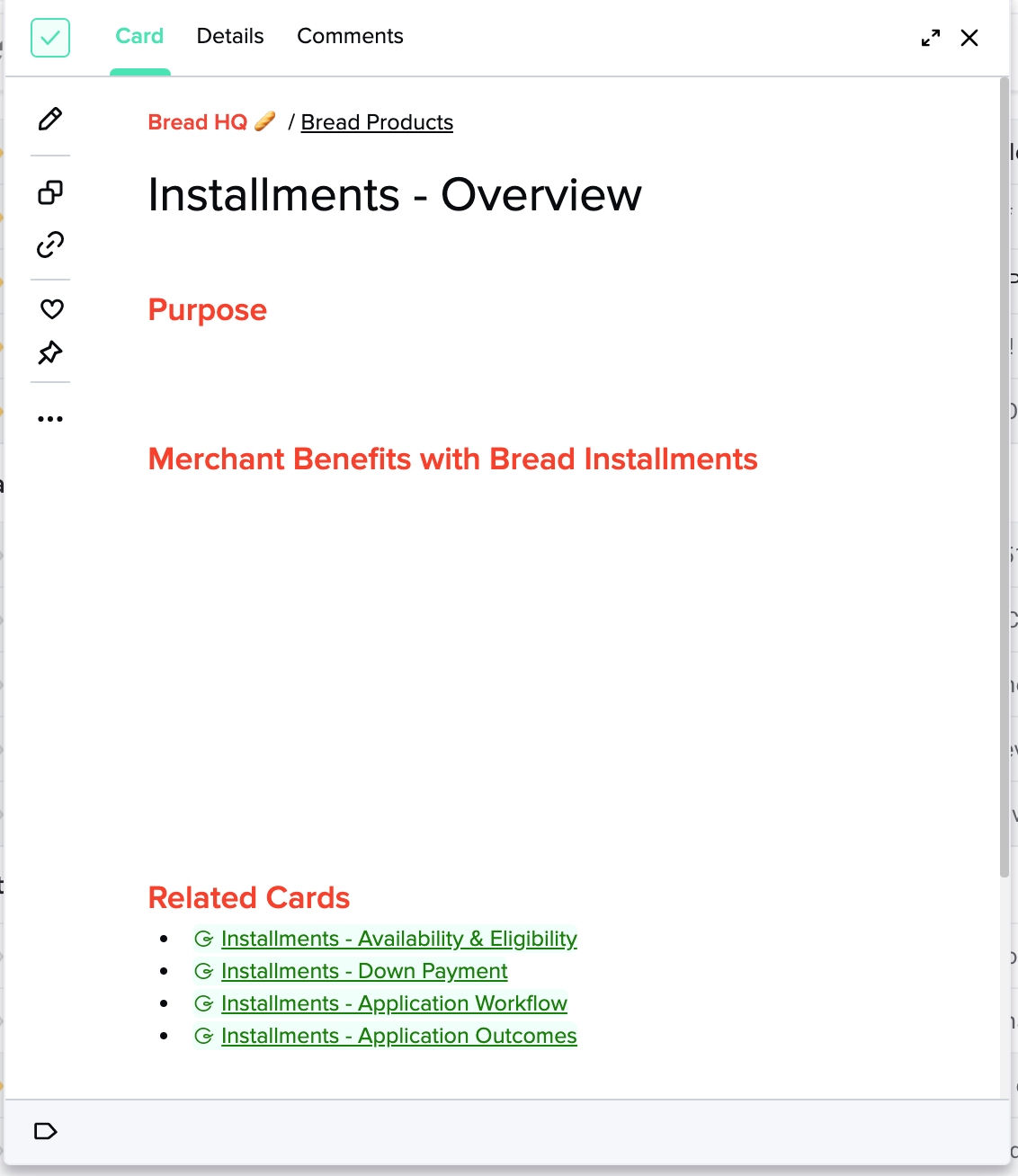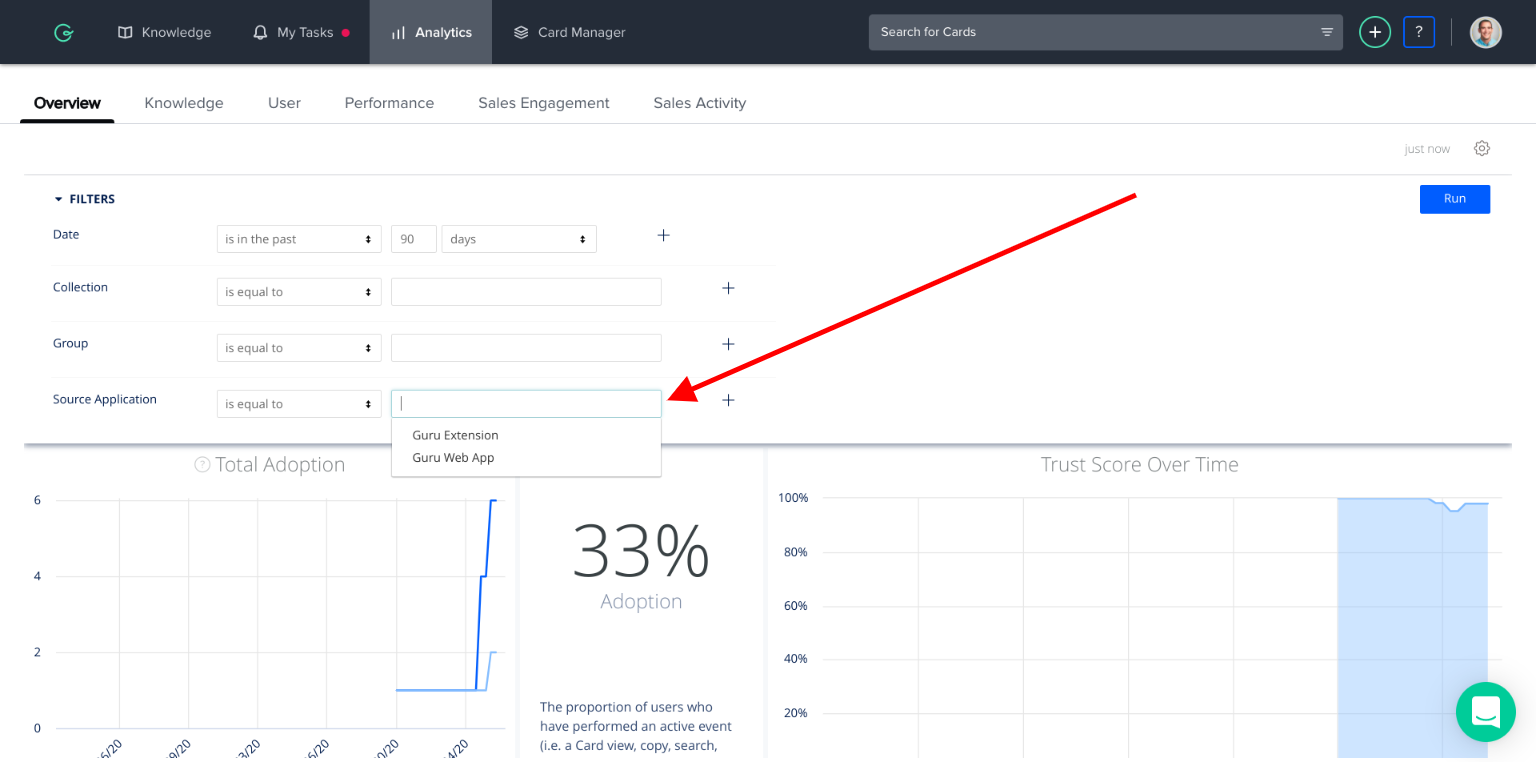How much emphasis do you put on use of the web app vs. extension or Slack/Teams?
Where does the data say people are accessing the tool?
Most of these hesitant adopters access in the web app, usually via a link that someone else sent them. Despite substantial training we've provided on slack access, when I talk 1:1 with people about it their minds are blown every time.
Tell me more about your second question! How can I find this?
Hi @esinger, my team built our card structure around the notion that every card needs to link to at least 2-3 other Guru cards using the "Guru card link" feature in the Editor. Is your team leveraging that and still getting the feedback you shared? Curious for myself too as we are about to roll out to 30 new users soon. Thanks
i covered our copy but that bottom section is what I'm referring to

Hi
@esinger, thanks for sharing this challenge, I hope we can get you some actionable tips and resources you can use to increase adoption!
Here are some general suggestions that might be helpful. Typically a big "aha" moment that catalyzed increased adoption is when users install the browser extension and/or use the Slack integration.
A great way to boost adoption in Slack and build the right behaviors across your team is to consistently model good use of Guru in Slack by doing things like answering questions w/Guru cards, setting up
activity feed(s), and setting up a workflow/process like
this to capture knowledge shared in Guru cards. And having some fun with it can't hurt either, like using
gifs to nudge people to search/share in Guru before always asking/answering questions :slightly
smilingface:
Keep the questions coming @esinger, want to make sure you get some helpful tools and approaches to try!
@Emily Singer - re: your question to my question and Chris' point about the extension -

Also, re: author designated 'Related Cards,' the system will also intelligently display 'cards that others also viewed' at the bottom of a card so in that sense - trust the process.
I'm curious if they've given more context to why they're hesitant to use it? Are they looking in several places for info before finding it? Are they understanding Guru as a search portal rather than "one more" place to look?
thanks, all! @pwickes I appreciate you pointing me to the analytics setting to understand users' entry points.
<@UNFC0HK8B> and @kfretz yes, we've been trying to use a related card structure (both manual like Kristin suggested and utilizing the automatic ones like Paul mentioned). It's definitely helpful once people find their way to a card.
@siobhan we're still new to Guru, and I think the biggest problem is people just not thinking to look on Guru. We've got an uphill climb in some ways because we were using Trello prior to Guru for the same purpose. We have a lot of residual apathy about exploring our knowledge content because of several years of poor experiences there.
Hi Emily, Im unsure what teams use Guru at AnswerLab however, if there are client facing revenue teams that have numbers to hit then that can be an avenue.
I've recently been suggesting this for a support team for instance. If, at this early stage, you can identify top performers who do use Guru then you have an asset to recognise and empower through socialisation.
Lauding them in a weekly meeting or asking them to present how they access knowledge in Guru as a way to prompt a discussion perhaps.
You could tie them to an informal cell with themselves and two new joiners to shepherd and instill this growing understanding of the worth of accessible knowledge from the get go. Not that it has to be new joiners only though!
Do you have a social zoom event coming up or something where you highlight certain teams? Perhaps you could showcase Guru and then invite people to try it through fun means such as a Random collection with Boards for travel advice, parenting at home, top deals, recipe ideas etc?
Adding to that, I think that adoption should be approached by taking the three pillars of recognition, empowerment and fun while considering how to evoke and encourage a sense of collective ownership and change management theory.
Sorry for the long sentence!
@esinger based on some of what @donovan shared today during Guru Deep Dives, seems like adoption has been picking up at AnswerLab, which made me smile :slightlysmilingface: I wanted to check back w/you on this. How are things going? Any new insights you'd share on adoption, or questions for how to further improve adoption? Hope al is well!



